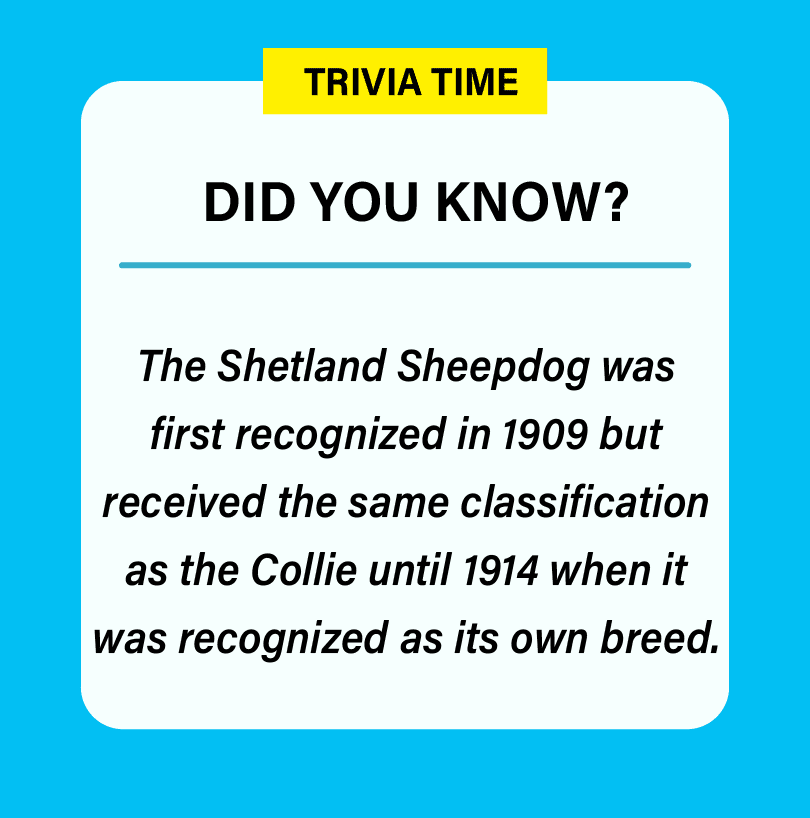Shetland Sheepdogs, colloquially known as the Sheltie, are an extremely intelligent breed who loves their family. They are highly adaptable, making them a perfect match for any family.
Breed History

Shetland Sheepdogs were originally bred on the Shetland Islands, a group of rocky islands in Scotland. They were used by Scottish farmers to herd sheep, ponies, and poultry. Because of their isolation on the remote islands, the Shetland Sheepdogs were unknown to the rest of the United Kingdom until the early 20th century. They were recognized by the Kennel Club in 1909.
The Shetland Sheepdog’s Characteristics
Appearance & Coat
Shelties have a double coat with a short and dense undercoat and a longer, harsher topcoat. They have a distinctly furry mane and frill with smooth hair on their head. Shelties can be a variety of colors, including Black & White; Black, White & Tan; Blue Merle & White; Blue Merle, White & Tan; Sable & White.
Temperament
Shetland Sheepdogs are extremely affectionate and make a wonderful companion to a family with children. They are loyal to their owners and a bit reserved towards strangers. They are extremely intelligent and can be trained in many different agility sports.
Health
Shelties are generally healthy but could suffer from Hypothyroidism, Collie Eye Anomaly, von Willebrand’s Disease, Canine Hip Dysplasia, or Dermatomyositis. A healthy Sheltie could live 12 to 18 years.
Caring for a Sheltie
A Sheltie’s Ideal Home
A Sheltie’s ideal home would be with a loving family and plenty of fenced-in yard to run around. They are extremely affectionate and loyal to their owners and will often follow them around the house. If you are often busy and out of the house, a Sheltie might not be the right fit. They were bred as herding dogs, so having a fenced-in yard to run around will be enjoyable for your pup.
Training Best Practices

Shetland Sheepdogs can be trained in a variety of activities. They have a natural inclination to herd, so they are excellent at competitive herding. They’ll also do great at agility, obedience, showmanship, flyball, and tracking. Their eagerness to please makes them easier to train, especially with positive reinforcement from their owners.
Exercise Needs
As mentioned above, the Sheltie is an energetic herding breed that needs daily exercise outdoors. They will enjoy walks, playing fetch, and running around fenced-in yards. They are relatively inactive indoors, so if you live in an apartment, be sure to take them outside multiple times each day.
Grooming & Hygiene
The Sheltie’s thick double coat should be groomed at least once a week and multiple times a week during shedding season. While grooming, check for any matting in hidden areas, like the ears and armpits. The coat naturally repels dirt, so they should only require a bath when they get extra dirty.
Does the Sheltie sound like the perfect addition to your family? Find Shetland Sheepdog puppies for sale near you.

